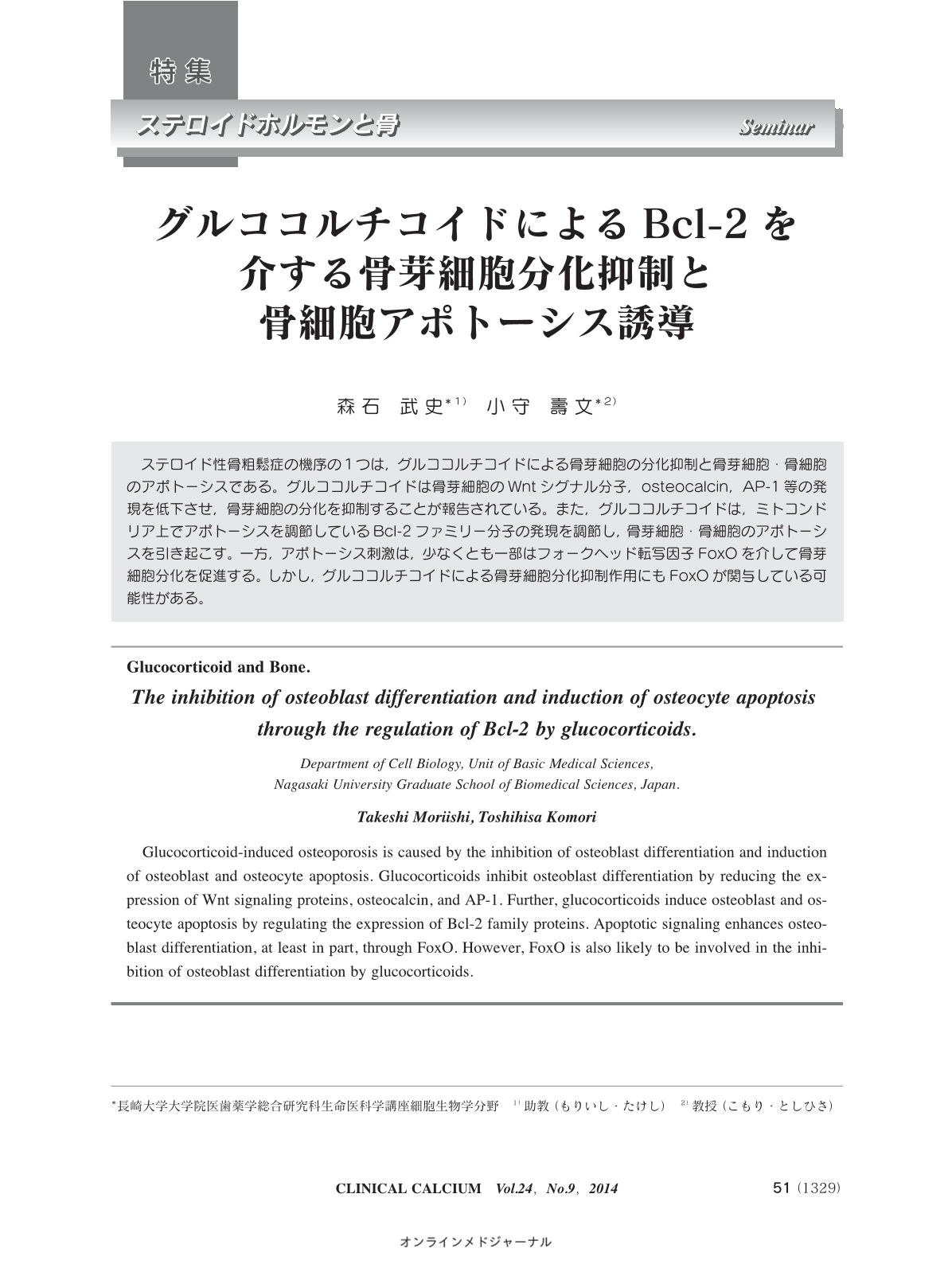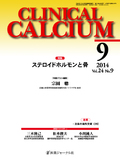Japanese
English
- 有料閲覧
- Abstract 文献概要
- 1ページ目 Look Inside
- 参考文献 Reference
ステロイド性骨粗鬆症の機序の1つは,グルココルチコイドによる骨芽細胞の分化抑制と骨芽細胞・骨細胞のアポトーシスである。グルココルチコイドは骨芽細胞のWntシグナル分子,osteocalcin,AP-1等の発現を低下させ,骨芽細胞の分化を抑制することが報告されている。また,グルココルチコイドは,ミトコンドリア上でアポトーシスを調節しているBcl-2ファミリー分子の発現を調節し,骨芽細胞・骨細胞のアポトーシスを引き起こす。一方,アポトーシス刺激は,少なくとも一部はフォークヘッド転写因子FoxOを介して骨芽細胞分化を促進する。しかし,グルココルチコイドによる骨芽細胞分化抑制作用にもFoxOが関与している可能性がある。
Glucocorticoid-induced osteoporosis is caused by the inhibition of osteoblast differentiation and induction of osteoblast and osteocyte apoptosis. Glucocorticoids inhibit osteoblast differentiation by reducing the expression of Wnt signaling proteins, osteocalcin, and AP-1. Further, glucocorticoids induce osteoblast and osteocyte apoptosis by regulating the expression of Bcl-2 family proteins. Apoptotic signaling enhances osteoblast differentiation, at least in part, through FoxO. However, FoxO is also likely to be involved in the inhibition of osteoblast differentiation by glucocorticoids.



